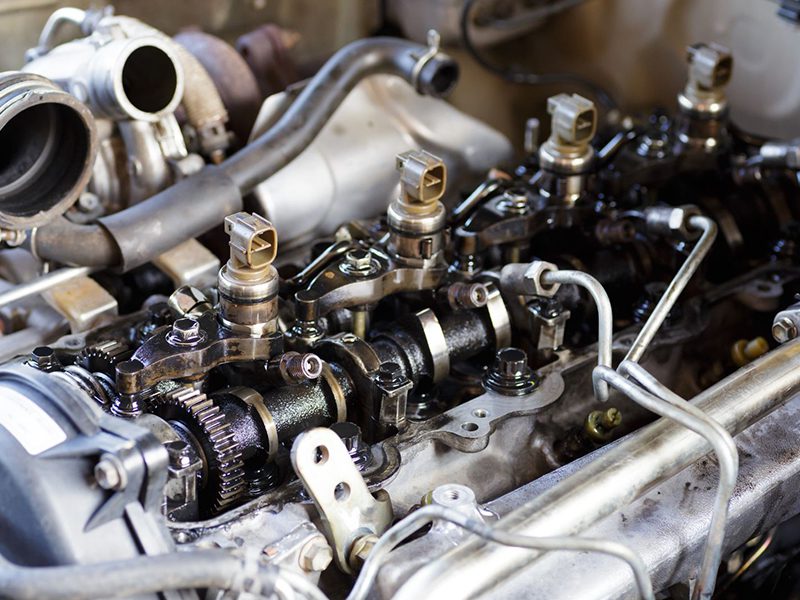Suppose you’re a B2B auto parts dealer, mechanic, a restoration professional, or just a regular petrolhead. In that case, understanding the practical implications of choosing between fuel injection vs carburetor isn’t just technical—it’s critical both for your business and your enthusiasm.
As someone deciding on parts procurement or garage engine upgrades, knowing the differences between FI and carburetor can guide your project’s success. With that in mind, let’s explore the pros, cons, and use cases to help you choose the perfect fuel delivery method for your needs!
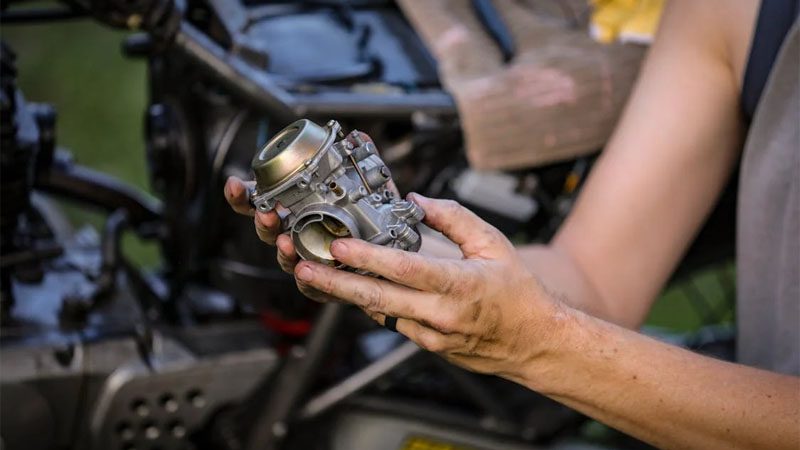
What are Fuel Injected Engines?
In today’s day and age, fuel injection setups (FI systems) have become the norm, replacing carburetors due to superior fuel efficiency and considerably fewer emissions. They also tend to be more refined while also offering more power per liter of output in the combustion chamber.
EFI systems use a bunch of sensors to constantly monitor the engine and alter the fuel supply in real-time, thus providing the very best air fuel mixture.
How Do Fuel Injected Engines Work?
They rely on fuel pumps to push fuel from a fuel tank through a metering system and spray it into the intake manifold just outside the engine cylinders, which gives an added layer of control over the combustion process.
A servo regulator measures airflow entering the engine through engine valves and adjusts the fuel to keep the mixture correct in real time.
For most modern engines, a fuel-injected system is indeed the better choice as it is more efficient, more powerful, and less harmful to the environment, especially when considering engine temperature.

What are Carbureted Engines?
Carburetors work by mixing air and fuel in a consistent manner using a system of calibrated jets and passageways, but have trouble maintaining proper air-fuel ratios in varying conditions.
Because of this, they’re not ideal for situations where altitude, temperature, or engine load can vary significantly.
Although still used in small engines, motorcycles, and classics, they are slowly being phased out in favor of advanced fuel injection systems in modern vehicles. That said, they remain popular among DIY enthusiasts and restorers for their simplicity and nostalgic value.
How Do Carbureted Engines Work?
The Venturi effect within a working carburetor is used to vaporize and mix fuel with air prior to entering the combustion chamber, while float-type chambers distribute the fuel into the induction system.
As air is drawn through a narrowing passage, pressure drops and draws fuel into the stream, creating the required air-fuel mixture for combustion.
They are simple, require no electronics, computers, or sensors, making them a whole lot cheaper to build and maintain. On the other hand, because they can’t alter the air and fuel mixture in real time, they are not as refined, not as efficient, and use a lot more fuel.
Plus, they are also prone to carburetor icing, which can cause engine failures and crashes, especially in humid or cold conditions.
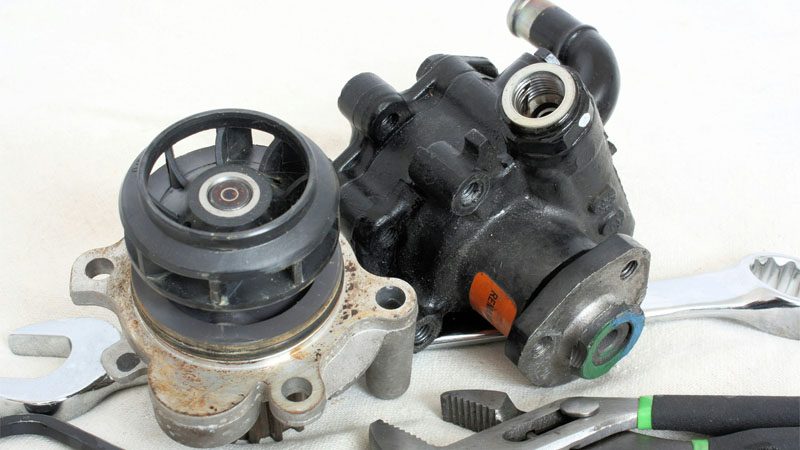
Fuel Injection vs Carburetor: Key Differences
Now it’s to compare FI and carburetor systems in regards to various categories to see clear pros and cons of each system. Here is what you need to know:
| Category | Fuel Injection | Carburetor |
|---|---|---|
| Fuel delivery method | - Electronic pump and injectors- Precise metering through sensors and ECU | - Mechanical jets and venturi systems - Not as precise, dependent on airflow |
| Engine efficiency | - Excellent fuel atomization- Adjusts mixture dynamically- Optimized fuel economy in various conditions | - Limited precision- Inefficient in changing conditions- Lower fuel economy |
| Emissions | - Significantly lower emissions- Meets modern regulations easily | - Higher emissions- Struggles with regulatory compliance |
| Maintenance | - Potentially more frequent routine maintenance- Complex troubleshooting | - Simpler routine maintenance- Easy to service mechanically without electronics |
| Cold starts | - Reliable and fast cold starts- Sensors adjust mixture automatically | - Difficult cold starts- Manual choke needed, inconsistent in cold weather |
| Tuning difficulty | - Precise, computer-controlled tuning- Requires specialized software or ECU tools | - Easier mechanical tuning by hand- Frequent manual adjustments required |
| Cost | - Higher purchase cost- Expensive electronics and repairs | - Lower initial cost- Cheaper and readily available parts |
| Performance under load | - Consistent fuel delivery - Enhanced throttle and performance | - Inconsistent fuel delivery under load or altitude changes- Prone to power loss |
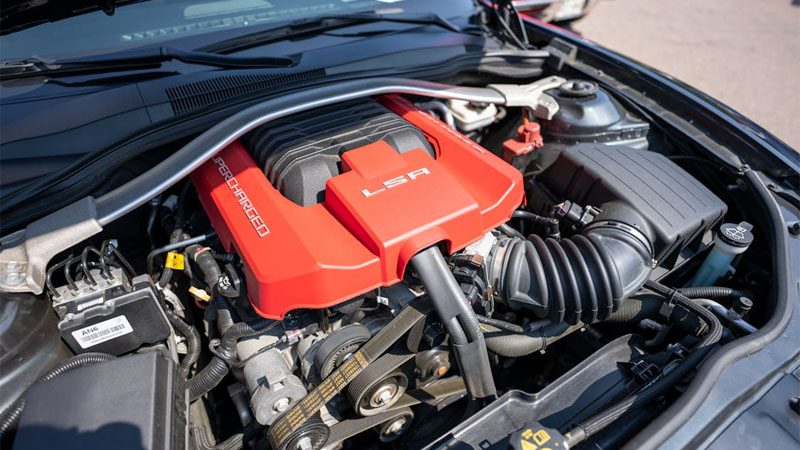
What are the Advantages and Disadvantages of FI Systems and Carburetors – FI and Carburetor Differences
With all of the different categories covered, we can now outline all of the pros and cons of carburetor versus fuel injection systems!
A. Pros and Cons of a Fuel Injection System
Advantages of Fuel Injection:
✅ Better fuel economy due to precise fuel metering
✅ Easier and more reliable engine starts, especially in cold weather
✅ More precise tuning capabilities through electronic control
✅ Noticably lower emissions, meeting modern environmental standards
✅ Better control of the throttle response under varying conditions
Drawbacks of Fuel Injection:
❌ Significantly higher complexity with electronic components and sensors
❌ Requires specialized diagnostic tools and expertise for repairs
❌ In general, more expensive to purchase, maintain, and repair
B. Pros and Cons of a Carburetor System
Advantages of Carburetors:
✅ Simpler mechanical design, easier to understand and repair
✅ Lower initial cost and cheaper replacement parts
✅ Easier for DIY enthusiasts to service without specialized tools
✅ Nostalgic appeal and authenticity for classic and vintage vehicles
Drawbacks of Carburetors:
❌ Lower fuel efficiency and higher emissions
❌ Difficult and inconsistent cold-weather starting
❌ Frequent manual tuning required to maintain optimal performance
❌ Performance fluctuations under loads or atmospheric conditions

Fuel Injection or Carburetor? Use Case Scenarios for B2B Buyers and Technicians
If you or your business is looking to get into fuel injection vs carb heat considerations, knowing what you want will help you choose between them.
Is Fuel Injection Better than Carburetors for a Daily Driver?
For everyday commuting, it’s almost always better to go with a fuel-injected system since these are designed to cater to daily commutes in various driving conditions.
An EFI system will be able to alter the air and fuel mixture in specific situations, which means that both highway driving and city traffic will be more efficient with the help of a fuel injector. Carburetors aren’t able to “switch modes” in the same way an EFI system can and thus won’t be as efficient or capable in most commutes.
Is Fuel Injection Better than Carburetors for Classic Builds?
When it comes to classics and restomods, the reason isn’t necessarily why we buy them, it’s more about the emotion, the nostalgia, and the experience. This means that efficiency and commuter-friendliness are not as important.
With that in mind, the vast majority of people prefer carburetors in classic builds simply because they are period-correct, offer a nostalgic driving experience, and are more fitting for most classic cars and restoration builds.

Is Fuel Injection Better than Carburetors for Off-Grid or Remote Applications?
If going off the grid is something your business wants to focus on, or if you are an enthusiast looking to retreat, carburetors are a lot more practical because they are easy to fix, don’t require sensors, a battery, or expensive tools, and can perform reasonably well even in high humidity.
If you do possess all of the tools necessary to service and upkeep an EFI system off the grid, then the difference isn’t as apparent. Even so, carbs are cheaper, have fewer parts that could fail, and jets, gaskets, or floats are cheap and more widely available, as carburetors are generally simpler.
Is Fuel Injection Better than Carburetors for High-Performance Applications?
Yes — in most cases, fuel injection is the superior choice for high-performance builds. While carburetors have a loyal following in drag racing and classic tuning scenes, electronic fuel injection (EFI) offers precision, adaptability, and consistent power delivery that outshine carbs in most modern performance contexts with the assistance of catalytic converters.
One simply can’t control as many parameters with a carbureted system as compared to a modern fuel injection system.

Is Fuel Injection Better than Carburetors for Motorcycles?
The answer to this question depends highly on the rider’s needs, but overall, fuel injection is better for modern motorcycles, especially when it comes to reliability, efficiency, and ease of use. Be that as it may, carburetors still have their place in certain styles of bikes and among DIY enthusiasts who understand how engines run.
Carbureted engines still offer a lot of appeal for dirt, dual-sport, and vintage riding scenes, but they simply aren’t as advanced.
Is Fuel Injection Better than Carburetors for Lawn and Marine Equipment?
Deciding between a fuel injected engine and a carbureted engine for lawn or marine equipment also depends on your needs. Electronic fuel injection offers better performance and efficiency, easier cold starts, and lower emissions— a fuel injection system is ideal for commercial or high-performance use.
On the flip side, carbureted engines are simpler, cheaper, and easier to fix, making them great for DIY users or off-grid settings. While a fuel injected engine excels in control and adaptability, aided by a throttle position sensor, carbureted engines remain reliable and easy to maintain.

Carburetor to EFI Conversions: Benefits, Costs, and B2B Use Cases
Doing a conversion from a carburetor to a fuel injection system is a popular choice for many seeking performance, smoother fuel flow, and improved fuel efficiency, especially in older engines that require a good old repair or replace treatment.
A go-to conversion replaces the carb with an electronic fuel injection setup, including components like the fuel pump, fuel injectors, air filters, and an ECU to properly manage the fuel supply.
Even though conversions can be expensive, ranging from $800 to $3,000 depending on the system, many enthusiasts and professionals find the investment worthwhile simply because the benefits are substantial.
Typical benefits include better cold starts, better throttle response, and fewer emissions. That said, the process involves extensive mechanical skill and tools, such as a laptop for tuning and possible fuel line modifications, which can be tricky to execute.
The most popular EFI kits come from brands like Holley, FiTech, and Edelbrock, making installation more accessible, offering near plug-and-play solutions for classic V8s and other platforms.
If you want to tune your engine to achieve more consistent performance and efficiency, switching to a fuel-injected engine could bring your build into the modern era with lasting gains and without too many drawbacks besides the process itself.
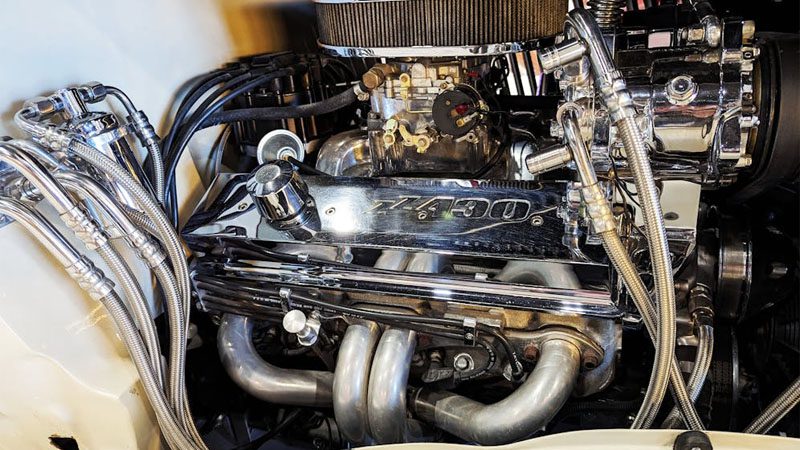
Fuel System Evolution: From Carburetors to EFI and Beyond
Carburetor and fuel injection systems have both been around for quite a while, but it’s safe to say that carbureted ones are slowly being phased out. Virtually all modern ICE cars now use FI induction systems, and there are no indications that this is likely to change.
EFI systems offer a better amount of air fuel mixture properties, the right amount of fuel in every situation, better power output, throttle feel, and proper engine push, and that’s something carbureted engines can’t compete with, even though many classics still use carbs.
It should also be mentioned that EVs and hybrid vehicles use electric powertrains driven by batteries and electric motors, and those that do burn fuel, burn it through fuel injected systems.
Fuel Injection vs Carburetor: Final Verdict for B2B Buyers and Enthusiasts
When torn between a carburetor and a fuel injection system, it all depends on what is more important to you or your business, so, carburetor vs EFI, what’s best?
If you like classics or prefer something that runs on simple tools and doesn’t rely on electronic sensors, a carbureted system is likely your best bet. They’re especially appealing if you’re not chasing peak engine performance or higher power output, but want straightforward reliability and easier repairs.
On the other hand, contemporary fuel injection systems give you superior throttle response, power output, and efficiency. They constantly monitor engine load, throttle position, and the amount of fuel needed to maintain optimal combustion — all automatically, all precise, all in correct time.
For modern vehicles, performance builds, or anyone balancing two systems (like in hybrid powertrains), fuel injection is the winner any day of the week.
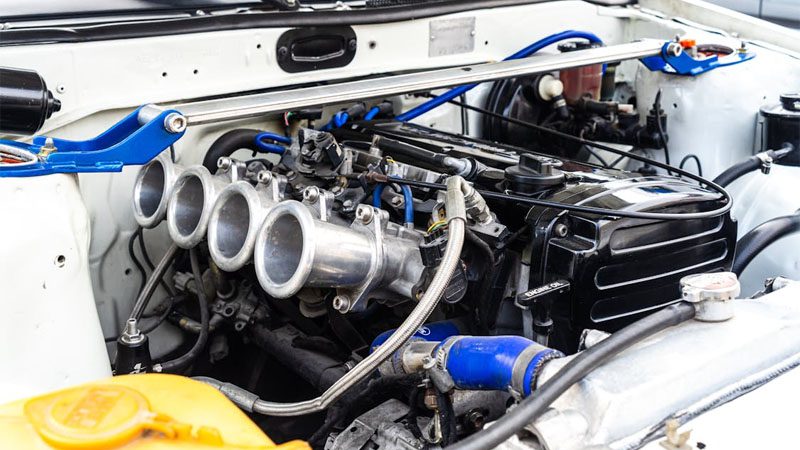
Conclusion
No matter if you’re restoring a classic car, upgrading to electronic fuel injectors, or managing a fleet of all kinds of vehicles, having the right fuel system parts is essential for your and your customer’s satisfaction!
About Us
Partner with Nanjing Woda Auto Technology Co., Ltd., a global B2B supplier that fully understands the needs of workshops, engine builders, DIY enthusiasts, and auto parts dealers.
We provide top-quality engine carburetor components, fuel injection systems, sensors, pumps, intake manifolds, engine cylinders, fuel pumps, fuel injectors, and everything in between — tested for perfect fit, durability, and real-world performance in al conditions!
✅ OEM-grade and aftermarket EFI and carburetor parts
✅ Scalable inventory solutions for garages, parts distributors, and rebuilders
✅ Competitive B2B pricing and dependable global shipping
✅ Technical support tailored for your business goals
Contact us today to streamline your parts sourcing and keep your customers’ engines running at peak performance — no matter what fuel system they use.
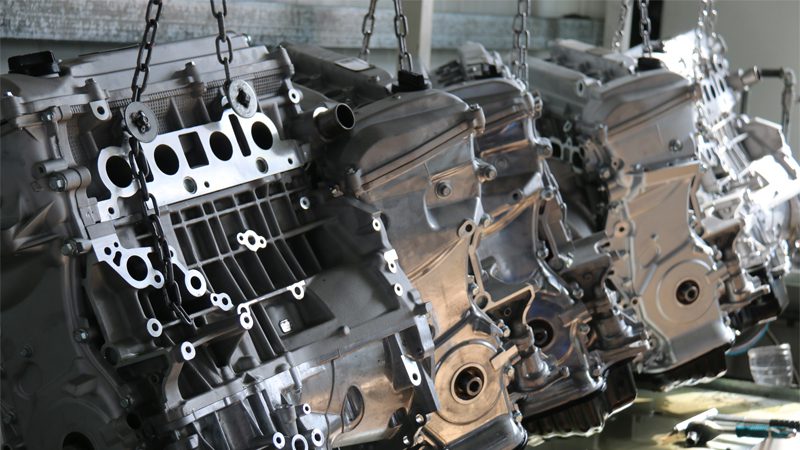
Frequently Asked Questions About Carburetor and Fuel Injection Systems
1. How Much Fuel Does Each System Use?
Fuel injected setups tend to use only as much fuel as the engine needs, while carburetors are usually less precise and sometimes deliver a lot more than necessary.
2. Does Fuel Injection Make a Difference in how the Engine Runs?
Yes — a fuel injected engine delivers fuel directly toward the combustion chamber, leading to smoother operation and more consistent performance, especially when planting the accelerator.
3. What is Carb Ice and Should I Worry About it?
Carb ice (also called induction carburetor icing or induction icing) can occur in carbureted engines under certain temperature and humidity conditions. It can block airflow and cause the engine to stall — something fuel injection systems are almost completely resistant to.

